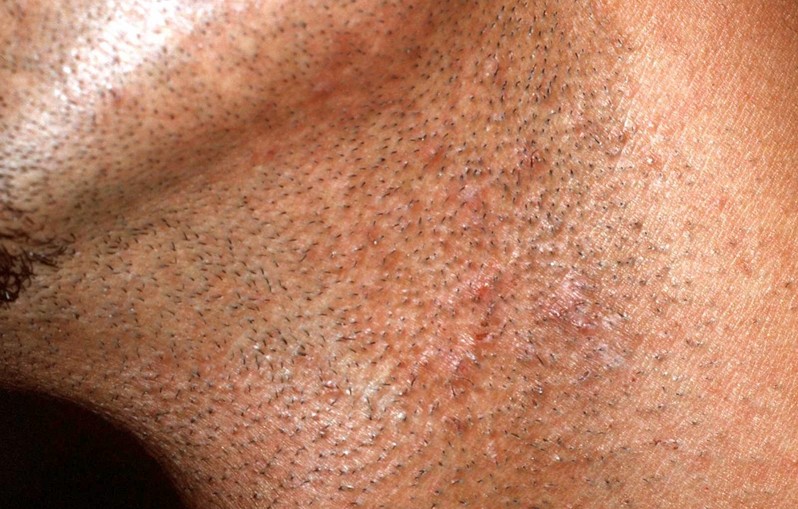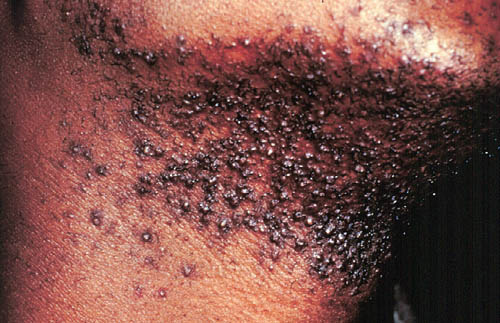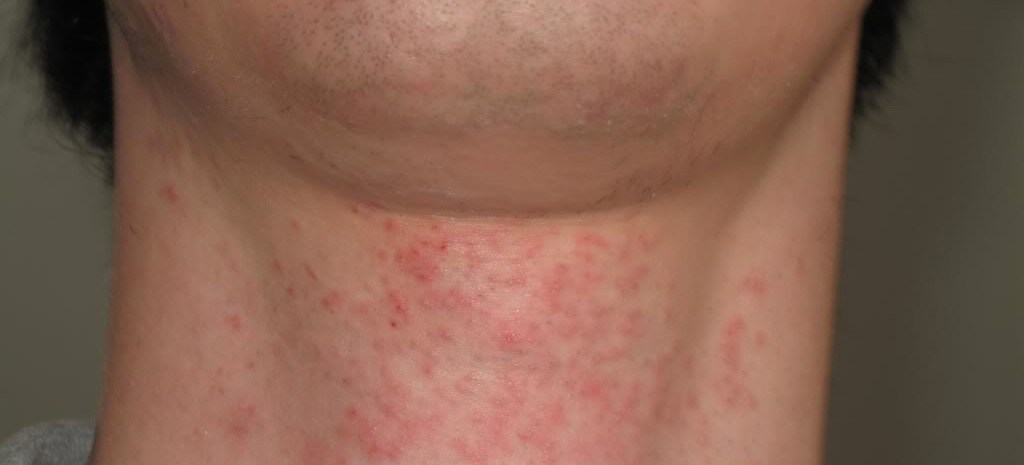Being bearded is desirable – until you get those aftershave razor burns and bumps on the neck. This is the most dreaded part of a regular shaving for many men. No matter how much you try to be careful during a shave, you must experience this at some point.
Of course these bumps are by no means desirable – they bring discomfort and disfigure your facial look. While there are effective techniques to help get rid of these unsightly bumps, prevention is always best. Razor bumps is common among men with curly hair — little wonder why between 45% to 85% black Americans develop aftershave bumps.
Also, razor burns will be an arc enemy to those who prefer a clean shave. A lot of people have changed creams, razors, and aftershave lotions with little or no positive effect. Instead, the condition may even worsen. Many have stopped trying and let it grow – they believe this is a surefire way to avoid bumps.
While this frustration-induced ‘resolution’ may seem a bit logical, would you go without a cut forever? So, that’s not a lasting fix – obviously.
And for people in more formal settings, they require a regular shave to be adjudged ‘decent.’So, if that’s you –who needs a regular shave – I’ll share some natural therapies that can help you prevent a razor bumps after a shave.
Here’s a full guide – with proven effective and efficient ways -on how to get rid of razor bumps on the neck. Before we discuss steps to a razor bump-free neck, let’s understand what razor blades are:
What are Razor Bumps?

Scientifically termed Pseudo FolliculitisBarbae (PFB), razor bumps pops on freshly shaved parts of the body. This is usually a resultant effect of ingrowing hairs which pushes against the skin pores. To your body, these curls are regarded as foreign bodies – this causes the body’s immune system to react. This defensive reaction leads to inflammation and itching around your neck region, which grows into ugly lumps and bumps.
After a shave, the hair strands become dangerously sharp. This could hurt your skin real bad. Besides facial beards, this adverse reaction may also occur onpubic parts after a shave – a condition termed Pseudo Folliculitis Pubis.
Besides reddishpus-filled pimples and rashes, the condition – if treatment delays – may leave you with scars. If you get reoccurring aftershave bumps, you may stop shaving and pay your dermatologist a visit.
Razor Bumps may cause:
- Swelling
- Redness
- Tenderness
- Itchy beard
- Burning sensation
Read also: Beard Dye For Men with Sensitive Skin
What Causes Razor Bumps?
-
Shaving Techniques and Products
Shaving techniques and products are common causes of razor bumps. For specifics, cartridge razors with double-edge are probably your arch enemy here.
This razor is best fit for a fast, close and efficient shave. To achieve this, the blade must come pretty close to the skin. Built with the lift and cut design, a blade picks up your hair and the other gives it a close cut.
One big problem among most men is that,while they run the first pass with the grain, the second goes against it. During the second pass, the razor gets closer, touching the tip of the follicles. This results in ingrowing – your hair grows in a curve, and back into the skin – Instead of growing straight, outwardly. The sharp pointed tips poke the skin pores and cause unsightly razor bumps.
Solution?
If you insist on cartridge razors, ensure you opt for single-blade razors without the lift and trim design – and always go with the grain. You may also have to reduce the number of passes.
Electronic shaver with rotary shaver heads and foil also causes bumps. With these shavers, you may have to make several passes to achieve a smooth shave. These repeated passes increase the chances of getting razor bumps. Since electric shavers do not get close to the skin –like the cartridge razors – it remains safer.
However, shavers designed with multiple length settings remain the best options. At the highest setting, only a few passes would give you a clean cut. You may have to invest in a good pre-shave product and trim short before you shave.
Try as much as possible to avoid making several strokes on a spot. Also avoid overstretching your skin during a with-the-grain shave. And don’t shave every day.
Safety razors is another nice option. These shavers do not feature the lift and cut technology. You have somewhat freedom to shave in any direction – with, against or across the grain. However, avoid pressing the blade too hard against the skin and try to complete the shave with the least possible passes.
While a safety razor does not promise a razor-bump-free cut, it reduces the chances minimally. Additionally, safety razors give you a close and neat shave – a feat electric shavers do not achieve.
Clinical Reasons
Tinea barbae, a form of fungal infection may also cause itchy beards
A severe infection called Sycosis barbae/Barber’s Itch may infect the hair follicles. This infection results in itchiness, inflammation and scars around shaved parts. One of the first signs is a pus-filled bump on the upper lip.
Tips to Prevent Razor Bumps

- Avoid shaving with dull old blades. It’s simple logic: you’d have to apply more force and do multiple passes for dull blades to give any significant result. Still, you may never expect a uniform shave with such blades. Also ensure to replace your blades regularly – to prevent bacterial infection.
- While shaving, go with the grain. Also, avoid multiple passes on the same areas and do not exert too much pressure.
- Shave in 3 days’ intervals. This spacing is appropriate to deprive the follicles enough time for ingrowing.
- If you easily get aftershave bumps, avoid – as much as possible – a close shave. That said, razor bumps should not stop you from having a clean shave – if this is your preference. So, here’s a way out: use an electric shaver to trim your hair short. This achieves a corporate look, clean and without bumps.
- Get a top quality shaving cream and a beard brush to lather.
- Use a good moisturizer to hydrate your skin. Moisturizers with glycolic acid, aloe Vera and other soothing against should be preferred.
Steps to Prepare Your Skin for an Anti-Bumps Shave

- A Hot Bath
A hot bath helps open your skin pores. During interactions with the environment, our hair follicles trap dirt– a hot bath removes them. However, here doesn’t connote a 30-second session under the shower. For best results, a 15-minute session will do.
If you’re in rush and can’t spare 15 minutes, you could use a wash towel method. Here, simply soak towel in hot water and massage the follicles around your neck region for about 4-5 minutes. Both methods will offer you similar result.
- Exfoliate
Although not compulsory, exfoliating is highly recommended for people prone to bumps. Exfoliation is the act of shedding dead skin, exposing the new layer underneath. You can perform this during shower.
If no scrub or exfoliating lotions, then a rough dry towel can perform as much. Simply wipe your neck region with the towel after a shower.
- Sterilize Your Blade
Do not overlook this step –both sensitive and non-sensitive skin. Unsterilized blades are usually the birthplace of several skin –and general health – problems. Common among these is razor bumps.
To sterilize, soak the blade in hydrogen peroxide or rubbing alcohol – to kill bacteria and germs. Rinsing in hot water works too.
- Lubricate
Some amount of shaving gel helps reduce the chances of bumps. Apply the gel generously and lather thoroughly. For more natural products, you may opt for aloe Vera- or coconut oil-based shaving products.
- Enhance Your Shaving Style
While shaving against the grain remains best for a smooth shave, they are a primary cause of bumps.However, ensure you use light strokes to avoid pulling. Also, try to avoid multiple passes on the same region.
- Aftershave Rinsing
After your shave, thoroughly rinse foam with cold water. Use a soft towel to dry your skin and apply a moisturizer. This helps curb blade tension, reduces the risk of bumps and improves hair texture. An aftershave balm would also come handy for treatment of bumps and razor burns.
Helpful Tips to Heal Razor Bumps on Neck
Already battling with razor bumps on your neck? Here are effect ways to get them off
- Get your hands off the bumps. Can you relate to such odd moments when you could give the world for a little scratch? We’ve all being there at one point.
What if I told you falling for that little scratch temptation could make things worse? Such little touches could easily cause some ugly infections over time.
- Avoid shaving until the bumps vanishes. Typically, this may take between 3 and4 weeks.
- Soak towel in hot water and press against affected regions. This protects against further curling of the ingrown hair. Towel soaked in cold water may offer almost similar result.
- Use moisturizers with glycolic or salicylic acid before bed. It helps soothe and nourish your skin. These acids also help to cease further spread of the lesions, as well as reduce itching and the heating sensation that often comes with bumps.
- Generously apply a mild hydrocortisone cream around affected areas before a shave. These lotions are rich in Vitamin A – a potent skin healing nutrient. It also brings relief to soreness and pain.
- Rope in Professionals
Get a season dermatologist. They may give prescriptions on a mix of topical steroids, anti-fungal topical creams and oral antibiotics –like erythromycin – to help reduce the awkward look of the bumps and stop hair curls from getting back into the follicles.
Home Remedies to Get Rid of Razor Bumps
There are several home supplies that could help you get rid of those unappealing shave bumps on your neck – without any side effect.
- Aloe Vera
When we talk about natural ways to handle skin issues, Aloe Vera comes to mind. Aloe Vera soothes skin, offer quick relief from itching a well as reduces redness and hot sensation. Its cooling effect is simply rewarding. Interestingly, aloe vera in juice and gel forms are widely available for purchase.
- Black Tea and Tea Tree Oil
Natural options like tea tree oil, apple cider vinegar and tea can bring immediate and long lasting effect from itchiness, rashes and razor burns.
Fresh cold black tea is highly antiseptic. Its high tannic acid level makes it a high-potent anti-inflammation agent. Apple cider vinegar and tea tree oil also have strong antiseptic properties that can help kill bacterial and germs in your pores.
- Essential Oil with Carrier Oil
Coconut oil, lavender oil, chamomile oil, lemongrass oil, avocado oil and olive oil are among the top favorite skin oils. These essential oils help reduce the tendencies of razor burns – at the same time, offer required skin nourishment. However, with the abrasive nature of these essential oils,to avoid the burning sensation, you may mix with organic carrier oil.
- Oatmeal Bath
Oatmeal contains high-level antioxidant – a key anti-inflammation agent. It also helps reduce redness and other skin conditions. Oatmeal also contains avenanthramides, a compound that combats itching.
- Lemon Juice
Lemon juice contains some properties that prevents further breeding of bacteria on your skin.
Simply dip a cotton ball in fresh lemon juice and rub gently on affected regions. Allow to dry and wash off with lukewarm water.
- Aspirin
Yes, aspirin doesn’t cure just headaches. It fights inflammation, too. Simply break 2 or 3 tablets in one teaspoon of water and make to paste. Rub generously on affected spots. Allow to dry and rinse off. Repeating this twice a day offers best results.
- Baking Soda
Baking soda comes handy for a range of skin conditions. For razor bumps, you’d either take a bath with a baking soda or make a paste.
For a paste, mix a table spoon of baking soda in a small cup of water. Dab the paste on affect area with a cotton ball or a soft piece. Allow to stay for a while before you wash with water.
Honey, cucumber mask, corn starch, salt and sugar mix are some effective home remedies you could try.
Summarily
There are truckloads of skin care products that helps good. These products are designed especially for inflammation, razor burns and preventing growing. If you prefer skin care specific products over home remedies, a mild medicated lotion will get it done.
Arm yourself with the best shaving practices and go for the right blades. The surest ways to gain victory over those unsightly pumps. Here’s the final take: everyone can easily avoid razor bumps – but where all attempts fail, there are truckloads of treatment options available.
That said, if your bumps keep appearing after every shave – or have spread widely – do not self-medicate. In such instances, consult a dermatologist immediately.